Resources
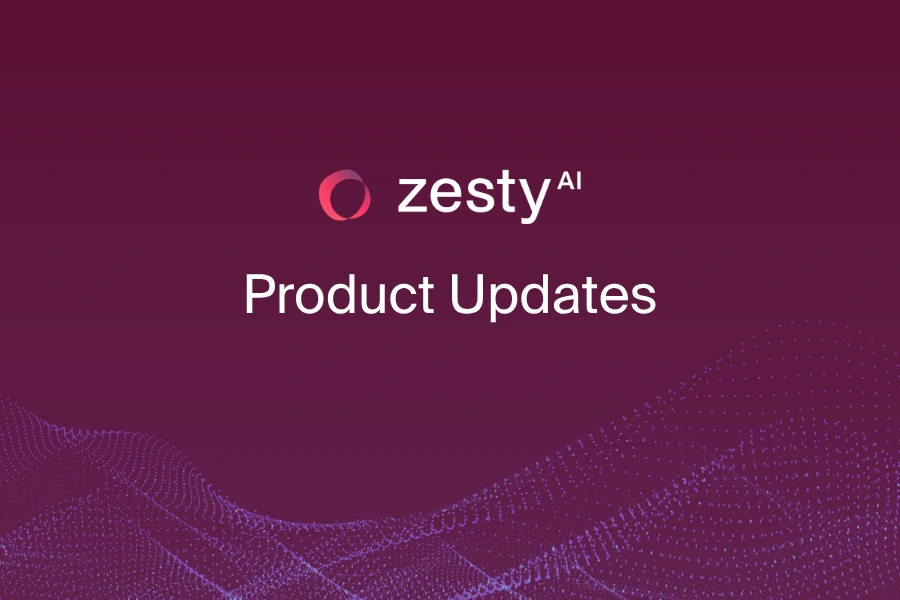
ZestyAI Product Updates: Smarter Models, Faster Workflows, and Richer Imagery
At ZestyAI, we’re continually enhancing our platform to help insurers better understand property risk, strengthen underwriting precision, and streamline operations. Over the last few months, our team has launched a series of updates that make our AI-powered solutions even more powerful and accessible.
From improvements in roof geometry and manufactured home modeling to expanded wildfire data on home hardening and structural vulnerability, plus faster APIs and faster APIs, these updates reflect our deep commitment to product excellence and customer success.
Smarter Risk Modeling for Manufactured Homes
Updated Manufactured Home Model in Z-PROPERTY
We’ve released an upgraded model for manufactured homes within Z-PROPERTY, trained on a broader set of imagery sources to improve data coverage and model accuracy.
This new version reduces the false positive rate, giving carriers greater confidence when evaluating mobile home risk—a critical upgrade for lines of business that rely on nuanced property insights.

Better Roof Geometry Analysis with the Roof Facet Model
Enhanced Accuracy and Speed in Roof Modeling
As part of our Digital Roof product, the Roof Facet model has been refined to deliver sharper roof geometry insights with faster processing times. This enhancement is especially valuable for customers scoring large portfolios, improving both speed and data quality.
Expanded Wildfire Risk Data Coverage
Compliance Pre-Fill Now Covers 99%+ of Wildfire Properties
We’ve expanded our Compliance Pre-Fill solution to support all wildfire-prone states, with property-level coverage now exceeding 99%. New on-demand access to critical wildfire mitigation features—including enclosed eaves, six-inch vertical clearance for siding, and noncombustible fencing—allows underwriters and compliance teams to make more accurate decisions with current data and zero added latency.
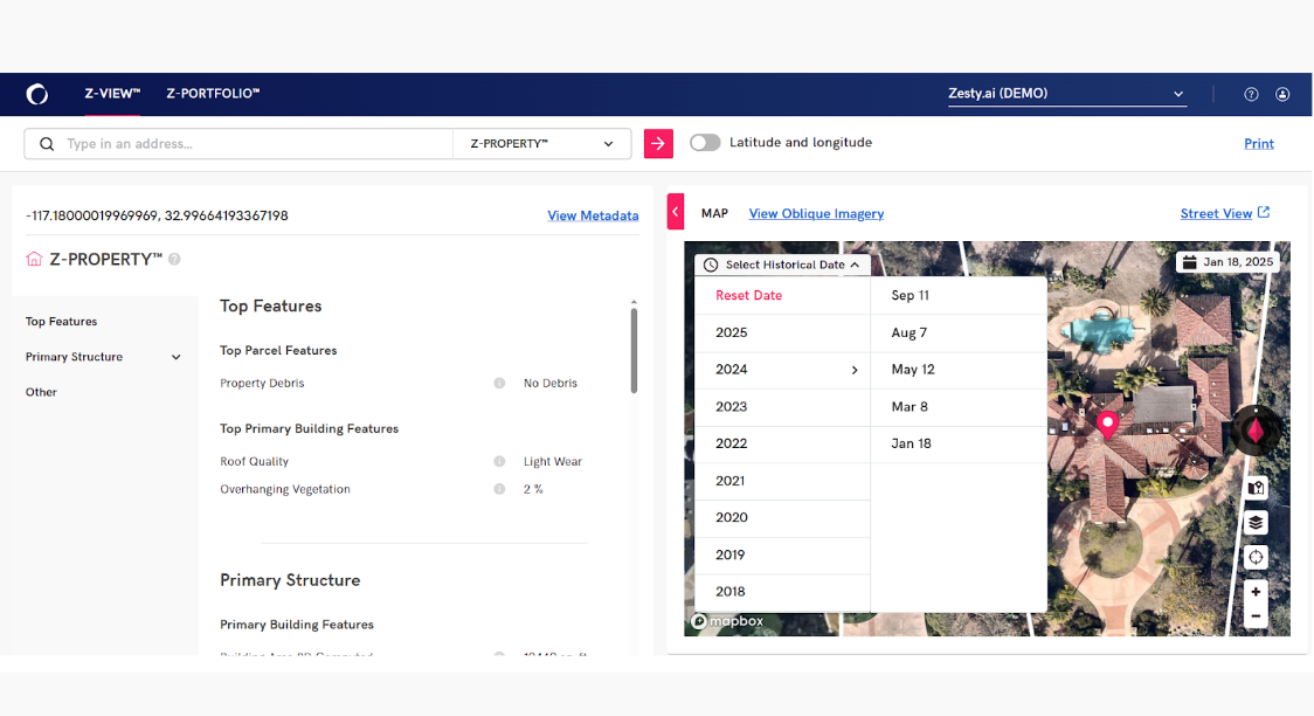
3D That Tells the Whole Story
Access to Richer 3D and Historical Imagery
ZestyAI now provides access to a broader and deeper catalog of high-resolution and historical imagery, powered by best-in-class sources of imagery. These enhancements improve underwriting workflows and allow insurers to “time travel” and evaluate how a property’s condition has changed over time.
This capability is especially valuable in regulatory environments that require proof of property degradation before policy changes are made. Historical imagery also gives underwriters a fuller view of prior conditions, providing context for past underwriting decisions.
Performance Gains Across All APIs
Reduced Latency and Improved API Response Times
We’ve optimized our APIs to significantly reduce latency, improving the speed and reliability of data delivery across all ZestyAI products. Whether batch scoring, running real-time underwriting, or executing renewal workflows, you’ll experience faster performance and greater efficiency—saving valuable time across your organization.
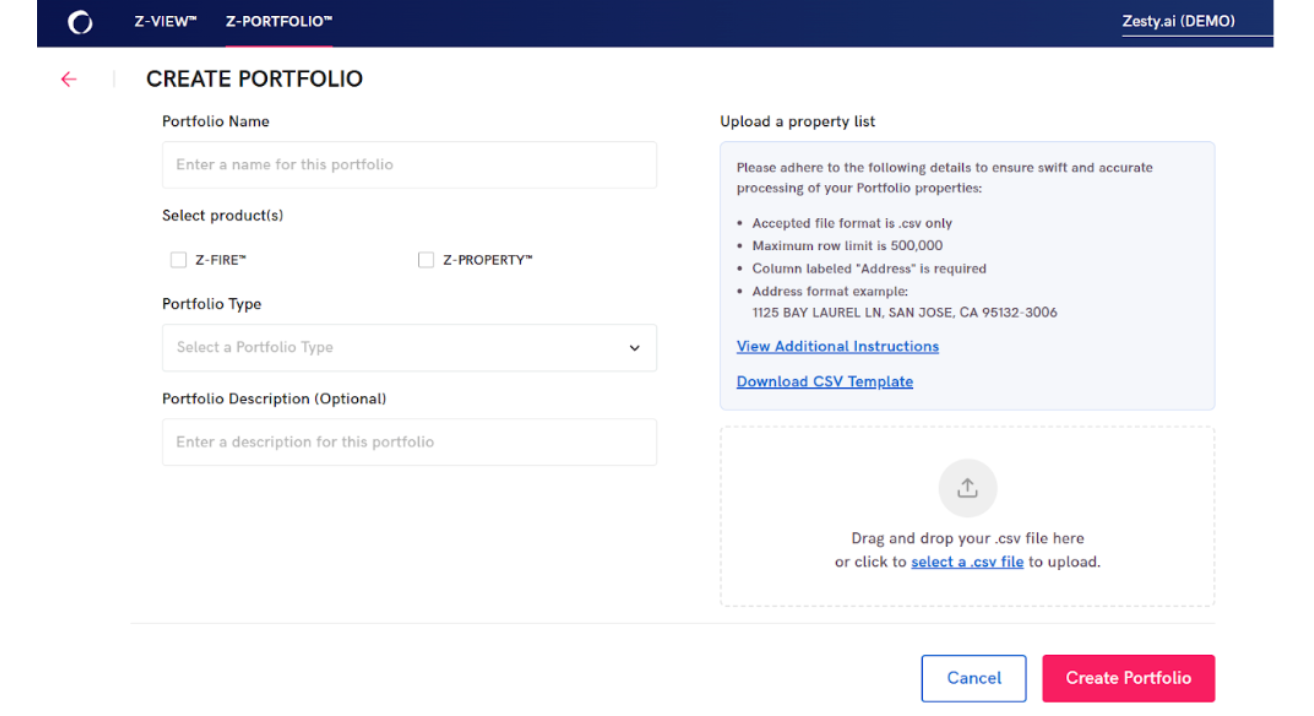
A New and Improved Upload Experience in Z-PORTFOLIO
Redesigned Upload Page for Streamlined Workflow
We’ve redesigned the Z-PORTFOLIO upload experience to make portfolio submissions more intuitive and efficient. Instructions and templates are now centralized in one place, and users can specify the purpose of the upload—such as renewal or dislocation analysis—to unlock deeper insights into usage patterns. This update enhances the self-service experience and helps customers extract maximum value from portfolio analyses.
Driving Continuous Innovation in Insurance Risk Intelligence
These product updates are more than just technical enhancements; they’re part of a larger mission to transform property risk assessment through AI. By improving model precision, reducing friction in workflows, and delivering richer, more current data, we’re helping insurers stay ahead of emerging risks and changing market demands.
If you’d like to learn more about any of these updates or request a demo, reach out to your Customer Success Manager or contact us below.
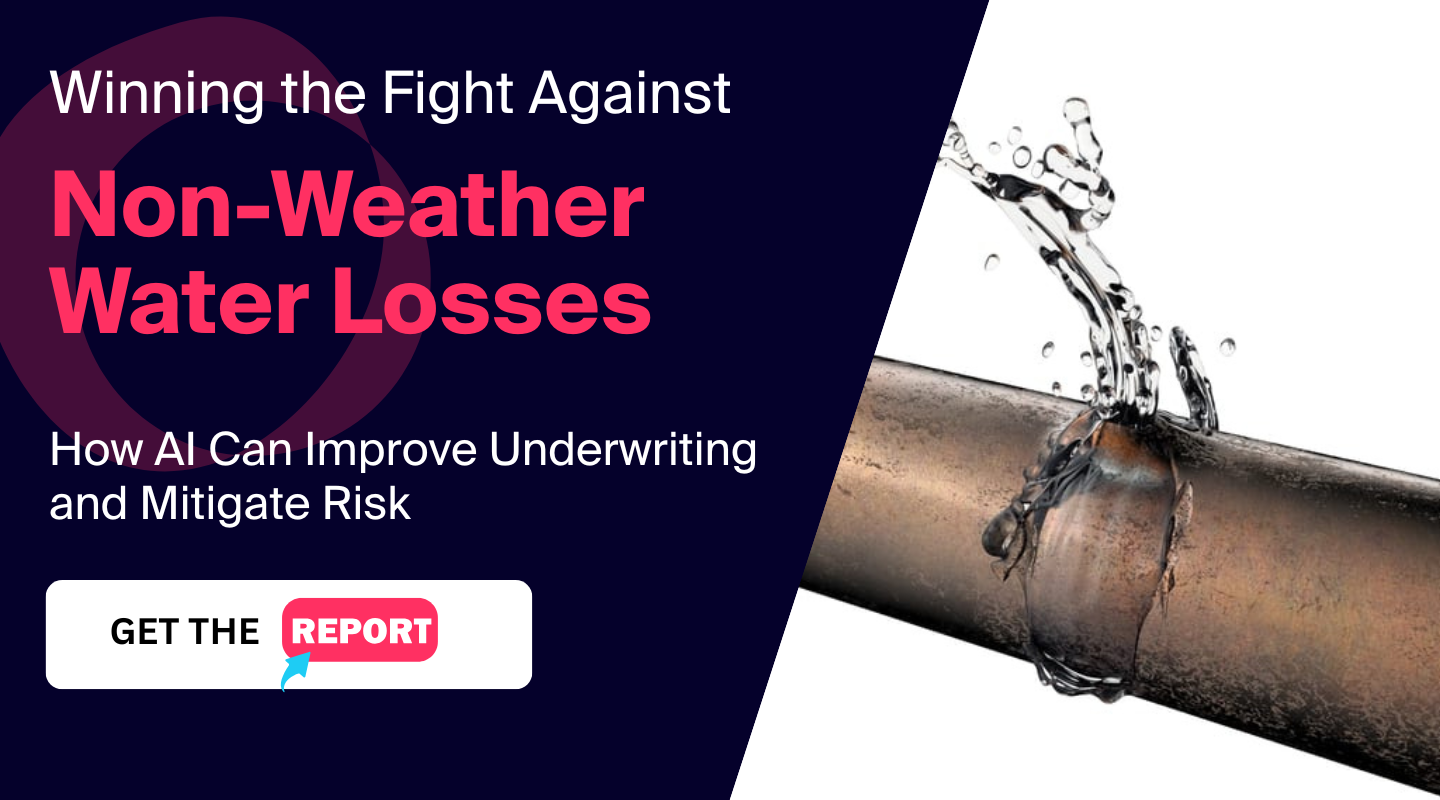
Why Non-Weather Water Losses Are Quietly Eroding Profitability
New research reveals how insurers can rethink their strategy for the 4th costliest peril in homeowners insurance
The Silent Peril Reshaping Homeowners Insurance
Non-weather water damage rarely makes headlines, but it’s quietly eroding profitability across the country.
It is now the fourth costliest peril in homeowners insurance, and claim severity has increased 80% in the last decade—a trend that’s accelerating even as frequency remains relatively flat.
Traditional risk models struggle to capture the early warning signs behind these losses, leading to mispriced policies, undetected exposure, and rising volatility for carriers.
Want the full analysis? Download the complete “Winning the Fight Against Non-Weather Water Losses” guide.
Why Loss Severity Keeps Rising
Aging homes and overlooked system failures
Many of the most expensive losses stem from aging plumbing, deteriorating materials, and slow-burn failures that often go undetected until damage is significant.
Frequency is flat—severity is not
Loss patterns suggest that while the number of events hasn’t surged, the financial impact of each event has—a signal that traditional models are not capturing the right property-level predictors.
The Property Features Most Predictive of Water Losses
The overlooked attributes that traditional models miss
Standard territory- or age-based assessments often ignore the property-specific details that meaningfully influence water loss risk, including:
- supply line material and age
- plumbing configuration
- occupancy patterns
- system maintenance and upgrades
- moisture exposure and prior loss indicators
These factors vary widely between neighboring homes—yet most models treat them as identical.
Where Traditional Underwriting Falls Short
ZIP-code and age-based proxies mask true risk
Legacy approaches rely heavily on broad territory-level assumptions that overlook structural vulnerabilities and system conditions.
Limited visibility creates mispriced policies
Without property-level insight, high-risk homes are often underpriced while lower-risk homes subsidize them—driving loss ratio volatility over time.
Get deeper insights on the drivers of water loss severity in our full guide → “Winning the Fight Against Non-Weather Water Losses”
How AI and Property-Level Data Are Changing the Landscape
AI models trained on real-world claims data can identify early signals of potential water loss by analyzing the interaction between:
- plumbing systems
- property attributes
- historical patterns
- material degradation
- repair history
This enables carriers to segment risk accurately, adjust pricing, and reduce preventable losses—long before small issues turn into major claims.
What Homeowners Actually Understand About Water Risk
Misconceptions around coverage and prevention
ZestyAI’s research shows that many policyholders:
- misunderstand what is and isn’t covered
- underestimate how much damage water can cause
- rarely take preventive actions unless prompted
This disconnect creates an opportunity for carriers to strengthen education, mitigation, and customer engagement.
Steps Carriers Can Take Today
Improve segmentation and rating accuracy
Property-level signals enable more precise risk tiers and more stable long-term portfolios.
Strengthen mitigation and reduce loss severity
Insights help identify which homes are at elevated risk and where targeted mitigation can reduce exposure.
Enhance underwriting workflows with explainable insights
Transparent, explainable AI helps underwriters understand the key drivers behind elevated risk—supporting both decision-making and regulatory review.
Get the Full Guide
Our new research paper, Winning the Fight Against Non-Weather Water Losses, breaks down the trends reshaping this growing peril—and the strategies carriers can use to get ahead of it.
Access the Guide
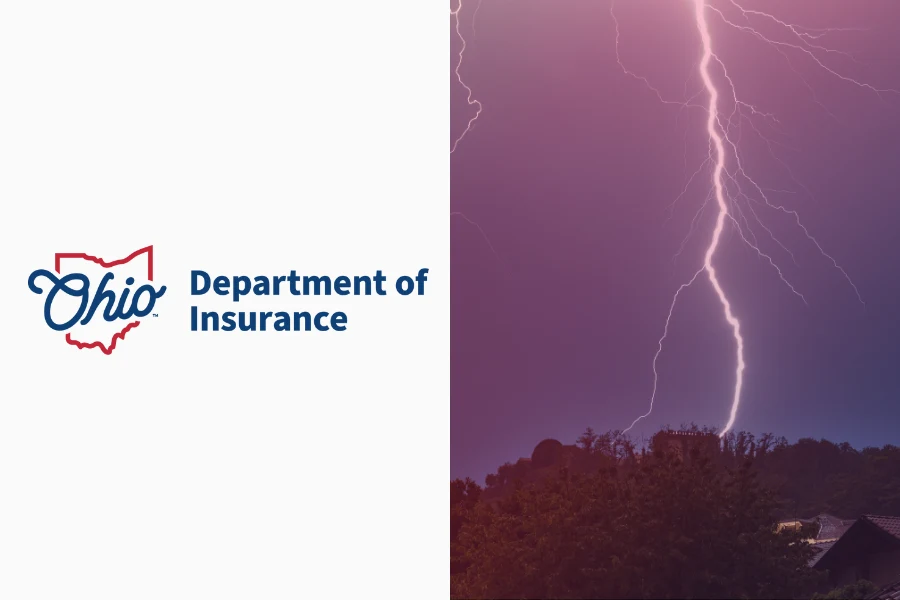
AI-Powered Severe Convective Storm Risk Models Approved in Ohio
Amid a surge in billion-dollar storm events, Ohio insurers gain access to advanced, property-specific risk models that strengthen underwriting.
ZestyAI announced that its Severe Convective Storm suite, including Z-HAIL™, Z-WIND™, and Z-STORM™, has received regulatory approval from the Ohio Department of Insurance.
With the addition of Ohio, ZestyAI’s Severe Convective Storm suite is now approved for use in 16 states, covering key high-risk markets across the Midwest, Great Plains, and South.
Ohio Faces Rapidly Rising Storm Losses
Ohio has experienced 36 billion-dollar loss storm events over the past five years alone, surpassing the total from the previous two decades, which saw just 33 events, according to NOAA’s National Centers for Environmental Information (NCEI). Severe convective storms, including hail, wind, and tornadoes, were the driver, contributing to over 57% of the state’s total weather-related damages since 1980.
Traditional Models Miss Critical Property-Level Differences
ZestyAI’s AI-driven platform predicts the likelihood and severity of claims from severe convective storms at the individual property level by analyzing the interaction of local climatology with property-specific characteristics. In contrast, most risk assessment models today rely on broader territory or ZIP code-level evaluations, overlooking critical property-level factors.
Each model is built and validated on extensive real-world claims data and delivers transparent explanations of the key drivers behind every risk score, helping carriers make more accurate underwriting and rating decisions.
Key capabilities include:
- Z-HAIL: Predicts hail damage risk and claim severity using property-specific attributes like roof complexity, historical losses, and accumulated damage, identifying which homes are most likely to file a claim, even within the same neighborhood.
- Z-WIND: Combines AI-generated 3D analysis of roof condition, complexity, and potential failure points with local climatology to deliver pivotal insights into property-specific wind vulnerability and severity.
- Z-STORM: Predicts the frequency and severity of storm damage claims, examining the interaction between climatology and the unique characteristics of every structure and roof.
Regulatory Approval Reflects a Shift Toward Precision Underwriting
“Too often, storm risk is priced using rough proxies instead of accurate property insights,” said Kumar Dhuvur, Founder and Chief Product Officer at ZestyAI.
“Regulatory approval in Ohio affirms the industry’s shift toward precision underwriting and rating—and opens the door to smarter, risk-aligned decisions and fewer preventable losses in one of the nation’s most important insurance markets.
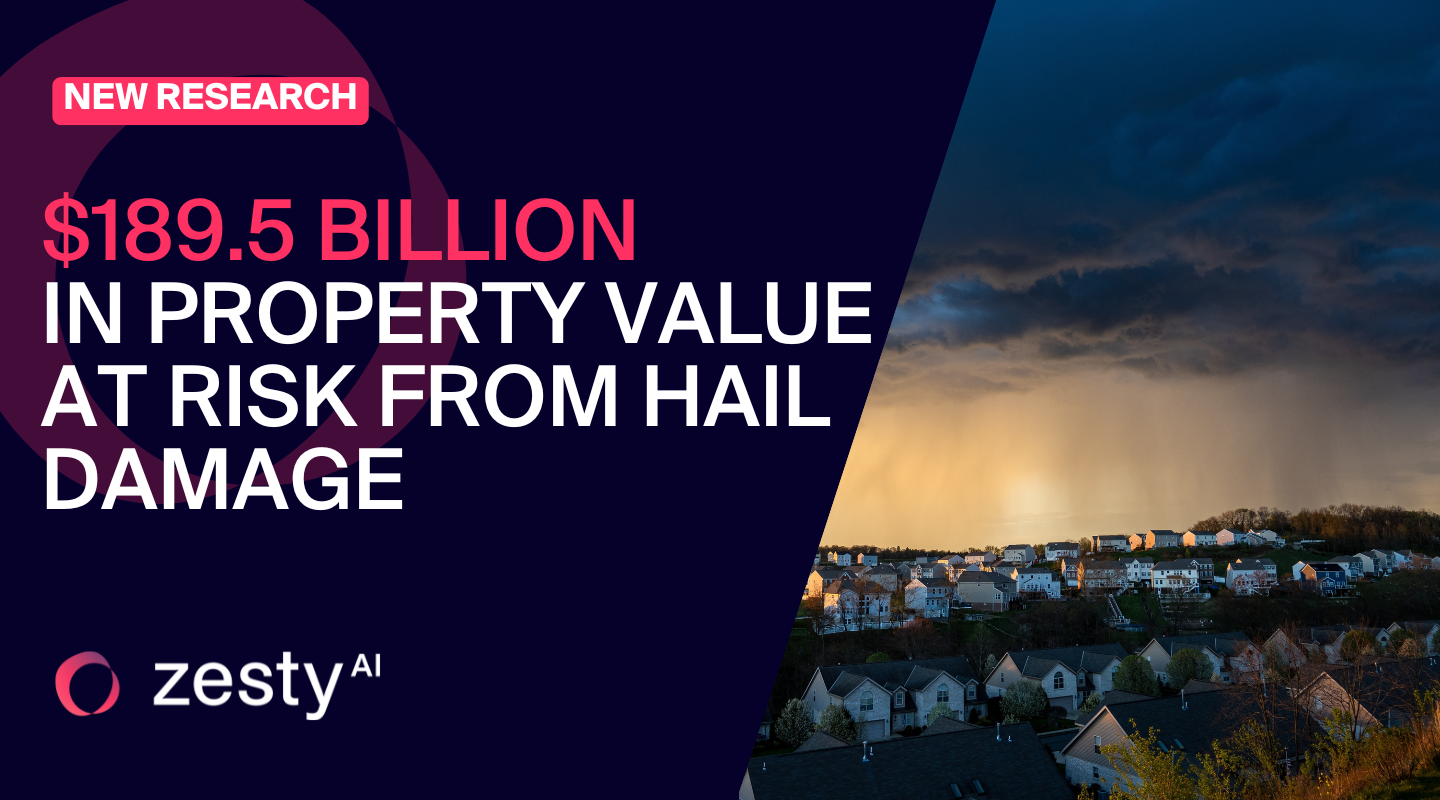
12.6 million US properties at high risk from hail damage
ZestyAI analysis reveals $189.5 billion in potential hail losses.
ZestyAI's analysis revealed that more than 12.6 million U.S. properties are at high risk of hail-related roof damage, representing $189.5 billion in potential replacement costs.
Powered by ZestyAI’s Z-HAIL™ model, the analysis underscores the growing financial threat of severe convective storms (SCS), including hail, tornadoes, and wind events. In 2024 alone, damages from SCS were estimated at $56 billion—surpassing losses from hurricanes.
Yet many insurers still rely on traditional models designed to estimate portfolio-level exposure, not property-level risk. As hail events increase in severity and frequency, these models often miss the structural and environmental conditions that drive real losses.
Kumar Dhuvur, Co-Founder and Chief Product Officer at ZestyAI said:
“Catastrophe models have helped insurers understand where storms may strike and how losses might add up at a portfolio level. But they weren’t built to assess risk at the individual property level, and they often miss the specific conditions that drive hail damage. By analyzing the interaction between structure-specific features and local storm patterns, we can distinguish risk between neighboring properties—enabling smarter underwriting, more precise pricing, and better protection for policyholders.”
Z-HAIL evaluates hail risk using a proprietary blend of climate, aerial, and property-specific data. By applying advanced machine learning to these inputs, Z-HAIL delivers highly granular predictions that reflect both the physical characteristics of a structure and the storm activity in its immediate surroundings.
Key findings from the analysis:
- 12.6 million U.S. structures flagged as high risk for hail-related roof damage
- $189.5 billion in total potential roof replacement exposure
Top five states by dollar exposure:
- Texas ($68B)
- Colorado ($16.7B)
- Illinois ($10.8B)
- North Carolina ($10.4B)
- Missouri ($9.5B)
States with the lowest dollar exposure:
- Maine ($4.7M)
- Idaho ($12.8M)
- New Hampshire ($18.5M)
- Nevada ($49.3M)
- Vermont ($64.7M)
In recent case studies, Z-HAIL has demonstrated the ability to pinpoint which properties are most susceptible to hail damage—even within the same neighborhood and exposed to the same storm. In one example from Allen, Texas, following a storm with 2.5-inch hailstones, Z-HAIL segmented risk across 483 policies, identifying no losses among properties rated “Very Low” by the model. This level of intra-territory precision gives insurers the ability to refine risk selection with confidence—even in the most hail-prone regions of the country.
-1.png)
Unlocking Insurance Access for Half a Million Homes and Business Owners
ZestyAI's property-level risk models are helping insurers expand sustainable coverage in wildfire- and storm-prone regions.
ZestyAI helped carriers and insurers of last resort extend coverage to over 511,000 properties previously deemed uninsurable in 2024. This year, ZestyAI aims to double its impact, helping to bring coverage options to over a million families and businesses, ensuring that those in catastrophe-prone regions have access to sustainable, risk-aligned insurance.
A 2024 Deloitte survey found that nearly a quarter of homeowners in high-risk states are struggling to find coverage, while over half cite affordability as a growing concern—underscoring the industry’s need for granular insights that support underwriting and pricing decisions aligned with true property-level risk.
“For too long, insurers have had to make high-stakes decisions with incomplete information,” said Attila Toth, Founder and CEO of ZestyAI. “Advanced AI models are changing that. With granular, property-specific risk insights, insurers can close protection gaps and build a more resilient market.”
Traditional risk assessment methods rely on territory- or ZIP code-level evaluations, overlooking the property-level characteristics that drive risk. This approach leads to adverse selection, inaccurate pricing, and widespread market withdrawal.
ZestyAI replaces this approach with transparent, AI-powered models that integrate climatology, geospatial data, historical losses and structural attributes to deliver precise views of wildfire, hail, and wind risk, among other perils.
The results:
- Clear mitigation guidance to help policyholders take action.
- Risk-aligned premiums that support responsible market expansion.
- Improved underwriting precision through AI-driven risk scores and near-complete U.S. coverage.
- Optimized loss cost controls via more effective deductible, Actual Cash Value (ACV), and coverage strategies.
- A supportive experience for carriers, families, and businesses—enabling faster decisions, better communication, and greater confidence in coverage options.
- Streamlined inspections that lower expenses and improve efficiency.
ZestyAI collaborates closely with regulators to ensure transparency, validation, and model oversight. Its wildfire model, Z-FIRE, is approved across all Western states, while its severe convective storm models have gained broad acceptance from Texas to Colorado and throughout the Midwest and Great Plains.
As regulators support the use of advanced models, they are also paving the way for smarter risk-based pricing and proactive mitigation—revitalizing insurance’s core mission: protecting the livelihood of home and business owners and their communities.
.png)
2025 Storm Risk Webinar Now Available On Demand
Stream our webinar for a preview of severe convective storm risk in 2025 and see how AI-driven insights can help you stay prepared.
Severe convective storms are becoming more frequent and costly, putting pressure on insurers to refine underwriting and risk management strategies.
On April 2, our experts covered:
- Key drivers behind increasing severe storm losses
- What La Niña means for the 2025 season
- How AI-powered risk models improve risk segmentation
- Live Q&A – Get expert answers to your toughest questions!
Missed the live event? Stream now!
Ready to see how ZestyAI works on your book of business?
Tell us a little about your needs. We'll show you how we reduce losses and help you price with precision.








